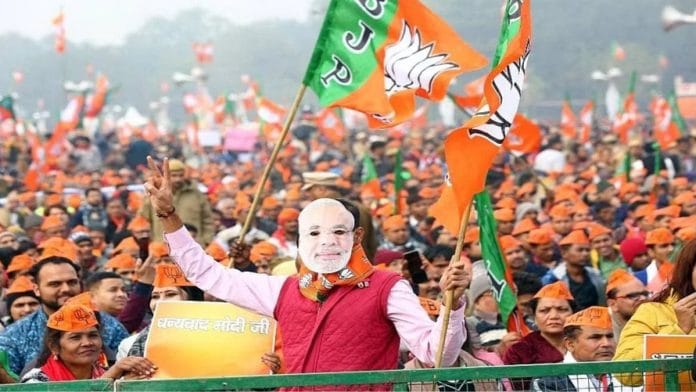Thank you dear subscribers, we are overwhelmed with your response.
Your Turn is a unique section from ThePrint featuring points of view from its subscribers. If you are a subscriber, have a point of view, please send it to us. If not, do subscribe here: https://englishdev.theprint.in/subscribe/
Shekhar Gupta (National Interest December 10th 2023) has analysed commendably. Here, a similar message in different words. Starting from Jawaharlal Nehru, congress ruled for nearly half-a-century! Probably they would have ruled more but for the invalidation of Indira Gandhi’s victory in election by court and later her assassination. BJP and its alliances in centre is relatively a recent one. Atal Bihari Vajpayee of BJP came three times but only once is a full term. BJP not coming to power is not a surprise but coming to power is! Why such an inference!? Though Shekhar Gupta has mentioned the zones/regions, he has not mentioned the wide variation in social heterogeneity in the country and in different states–Demographics and its variation! Mayawati/Kanshi Ram used to say. “ham manuwaadi ke khilaaf hai”. Who are these manuwaadis? Maayawati used to make it explicit by critically expressing “Tilak, Taraaju aur Talwar”-refers to Brahmins, Vaishyas and Kshatriyas respectively. So, these are more inclined / identify with BJP. Of course, some more social groups are allied. It is democracy. Votes matter. What is the population of Manuwaadis vis-à-vis Non-manuwaadis?? Manuwaadis come under OC/GT and rest are OBC, SC, ST. So, what is the population of OC versus the other three groups? Manuwaadis were/ are always a minority! Non-Manuwaadis may vary from 70 % to 90 % in different regions. In case there is a direct election by voting for PM and President no manuwaadi can become PM or President or CM. Say in Kerala 27 % are Muslims, 18% are Christians. So, 27 plus 18= 45 %. Remaining 55 % divided into OBC’s SC’s, ST’s etc. So how can one expect BJP there?? In Tamil Nadu, population of non-manuwaadis is–in addition to their Dravidian identity—is the deciding factor. One should realise that TN has only Tilak and do not have manuwaadi Taraaju and Talwar! Those there are migrants. So, it is natural that in Kerala and Tamil Nadu BJP cannot come up. ST population varies from 0-86 % and SC population from 0-21 plus % in different regions. Many states are demanding revision of caste census as they feel that they can implement at least 70% reservation. So, BJP coming up is a surprise. Isn’t? So differential distribution of social heterogeneity has to be kept in mind.
Once it was said – “we are living together not because there is any love lost if we get separated but because we cannot live separately”! Divisive tendencies were there since long and new divisive tendencies may emerge in future. Division in 1947 has witnessed so much of bloodshed. Will the same not happen if the country undergoes further division? Once super power USSR also collapsed in 1991 and 15 independent republics were formed. Even those who wanted/predicted a break down did not expect it to happen so soon. Will India also face a similar fate in future? British while leaving India said/predicted so. Along with the partition of Pakistan about 560 princely states were unified to form the present India. So after sometime if the country gets divided how it would be? Again into 560 princely states? Or the present 28 states into separate 28 countries?? After independence though there was no other partition the number of states has increased and the number of districts in a state have increased which has a bearing on social heterogeneity. Of course, administrative convenience is also quoted as a reason. So even if country is not divided. within the country division was there and likely to be there further. Social heterogeneity is an important factor to be kept in mind for any party to come to power at the centre and naturally it has to make compromises with different social groups and regional political parties. Further, irrespective of the party, as voters are addicted to huge incentives, huge electoral expenditure during elections and post elections cannot be avoided. It seems in Karnataka just five poll promises cost the government 65, 000 crores. This is apart from the expenditure during elections and other expenses. This may vary from state to state. So only those parties can come to power who can afford this expenditure. Further compromises and appeasing of a different nature are being evident by allocating the post(s) of Deputy CM. This trend may increase. In the past there were even seven Deputy PM’s and this phenomenon also may emerge again. In spite of this sometimes voters vote for a change! Can /will BJP/congress afford the electoral expenditure, incentives and horse-trading expenditure? So, it is necessary for patriotic custodians at all levels to make people realise the importance of maintaining the unity and integrity of the nation and to function accordingly.
These pieces are being published as they have been received – they have not been edited/fact-checked by ThePrint.


